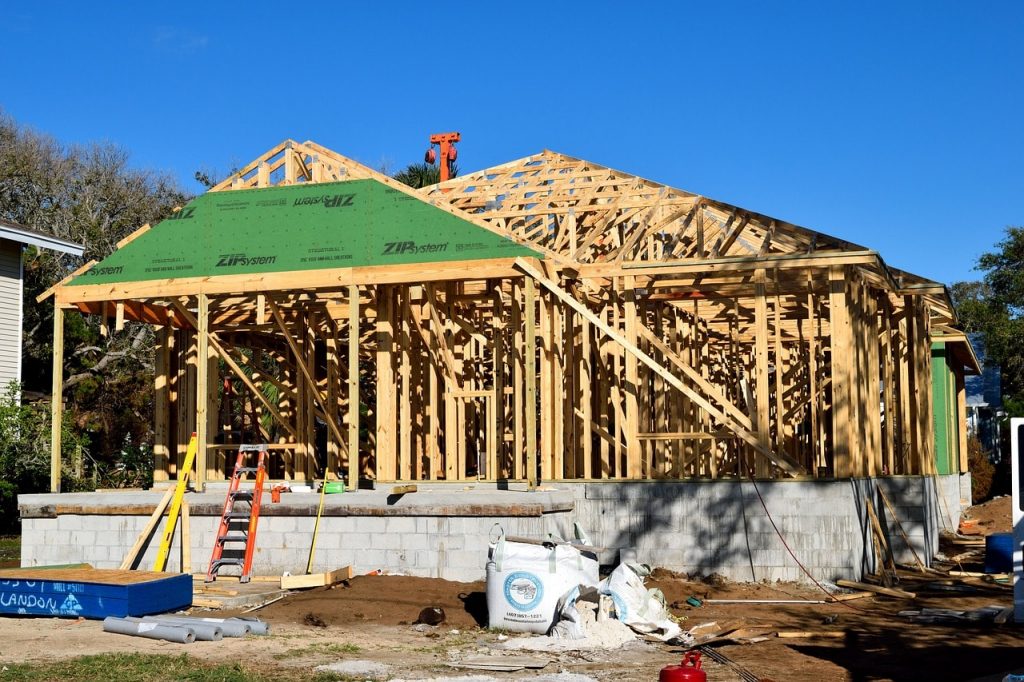10 Ways You Can Save Money Building Your Custom Home
Building a custom home doesn’t have to cost you a small fortune. In fact, with a bit of cost-effective planning, a well-defined budget, and an economical approach, you can build the home of your dreams, all while saving money during each phase. From choosing a smart design, to selecting the right builder, avoiding common mistakes, and knowing where to purchase your materials, the following tips can help you to cut costs, while still building the perfect home for you and your family.

Saving Money During The Design Phase
The following tips are meant for someone who is quite far along the path to home building – someone who has picked their lot, worked out a budget and has narrowed down the type of house they want to build. If you aren’t yet at this stage, you will still pick up some helpful tips for the future!
If you have entered the design phase, the following four tips can help you to save money.
- The bigger the home, the higher the cost: This first tip might seem like a bit of a no-brainer; however, it is a vital consideration if you want to stick to your budget. For example, during the design phase it is easy to think that a 1,250 square feet home will be a similar cost to a 1,000 square feet home; after all, you are only adding 250 square feet of extra space. However, if your home costs $100 per square foot, then that extra 250 feet just cost you $25,000. By keeping your floor plan small, yet highly functional, you can maximize your dollar (and stretch just a little bit farther). One of the easiest ways to stretch your dollar even farther is to create an open floor plan with multi-purpose living spaces. The open floor plan gives you the feeling of a bigger home, without the added building costs, while the flexible space offers easy accommodations for future life changes.
- Choosing the right (and economical) aesthetic: The aesthetic of your home is a vital component that should be considered during the design period. For example, if you want to have an industrial aesthetic, then you might choose to use concrete flooring. However, dying concrete floors can quickly break your budget. With this in mind, you might choose to simply seal the floors and save the colored dye for a future project. The unfinished look, coupled with the right interior design choices, can give you the finished product that you desire, without costing a fortune. In other words, when you are designing your custom house, it is okay to leave some projects purposefully unfinished. The end result can still match your chosen aesthetic, and your bank account will thank you.
- Choosing cost effective must-have features: During the design phase you should choose your must-have features. However, it is important that these features are also cost effective. For example, can you live with high quality faux wood floors that cost less than the traditional hardwood floors you initially picked out? By setting clear expectations during the design phase, you can ensure that your costs don’t suddenly skyrocket when your contractor begins the building phase.
- Cut costs with research: The design phase is all about research. Tour model homes, walk into open houses, and most importantly conduct your research on a national scale. If you want to save money, then you need to do a bit of research to discover what cost-saving tips you can implement into your dream home’s design. By researching you can also save time during the building phase. After all, when you know exactly what you want, before the first nail is hammered, then you will be doing your part to help your contractor stay on time and within budget.
5. Saving Money with the Right Contractor
Money can be saved when selecting a contractor, but it happens indirectly. You save money, or rather you don’t waste money later on, by hiring a competent building firm who delivers on time and within budget. Trying to make savings in the bidding phase is not always a wise choice.
But opening up the bidding allows you to find a fair bid. Extreme bids, at either the high or low end, should probably be discounted unless the contractor can justify the bid in a way that seems logical and reasonable to you. The danger is that a low bid comes at a cost later on covering delays and poor workmanship.
The easiest way to select the right contractor is to build a pros and cons chart for each candidate. Look at things like reasonable upgrades, inclusive based prices, reviews, and the projects that they have recently completed. We’ve put together a helpful guide to find a contractor you can trust. You can also ask a contractor about any relationships they have with national vendors and suppliers. The latter relationships can result in huge cost savings during the building phase.
At Legal Eagle Contractors, we are a design-build firm which provides both design and construction services and streamlines the entire process while offering a single point of communication. This setup is particularly helpful in our custom home builds or extensive additions requiring structural change. When design and construction teams are part of the same company and both are involved from the very start, there’s a much stronger likelihood of the project coming in on time and within budget.
Whether your contractor is part of a design-build firm or operates independently, make sure that you establish a clear line of communication with your selected contractor. He should know your priorities and expectations for the home building journey. The contractor should also know your budget, so that he can offer input on additional ways to cut costs. For example, the right builder will know that you can save thousands of dollars by choosing standard measurements rather than the custom windows you had first envisioned.
6. Be Frugal and DIY (When It Makes Sense)
Even though you will be working with a trusted contractor, there are some projects that you can DIY, especially if you are handy with a basic set of tools. For example, you can save money by purchasing and installing the hardware for your bathroom and kitchen cabinets and drawers. Knowing what projects to DIY will depend on your carefully selected contractor and the projected cost of the project. Keep in mind that you can always finish small projects after the contractor has completed his work. Just like our earlier concrete floor example, some home building projects are best saved for a rainy day, or for when you are feeling particularly handy.
Saving Money During the Construction Phase
The following five tips can help you to save money throughout the construction phase.
- Source your own materials: Did you know that you can source your own materials? While many contractors will be able to find better prices on bulk items (especially if they have established relationships with national vendors and suppliers), there are certain cases when you can buy high quality (yet less expensive) items on your own. Most often, you can find cheaper appliances from large retailers. You can also shop liquidation sales to purchase materials at their lowest cost, even if they won’t be used for several months.
- Take advantage of family and friend connections: If you have family or friends who work as builders or plumbers, then you should by all means reach out to them. Whether your family and friends are able to help with your DIY projects, or they have connections of their own at local appliance shops, you can save thousands of dollars simply by asking for help.
- Apply for applicable home improvement or energy efficiency tax credits: While tax credits won’t save you money during the actual construction phase, they are a great way to get some of your money back once your custom house is built. Be sure to research possible home improvement or energy efficient tax credits before you begin the construction phase. In fact, by doing a little bit of research, you can save thousands of dollars simply by choosing the right energy efficient appliances and materials.
- Stick to your budget: The biggest and easiest way to save money during the construction phase is to stick to your budget. To stay within your budget you should, a) have a plan that you can implement, b) make decisive decisions, c) build in a little room for accidental splurges, and d) identify all of the costs of the construction phase. From permits to final inspections, to recognizing that you might splurge on post-construction landscaping, if you want to stick to your budget, then you need to be honest with yourself and your contractor. Nothing is worse than getting “in over your head,” and panicking because you don’t have the funds needed to complete your dream home. Fortunately, the preceding tips can and will help you to save money, so that you can stick to your budget and rest easily knowing that you can afford your dream house.
The Bottom Line: Follow These Tips to Save Money on a Custom Home
Cheaper is not always better; however, when you are building your custom home, you don’t have to break the bank. Instead, with your own lot, and the above tips, you can save money throughout each phase of the home building journey.






